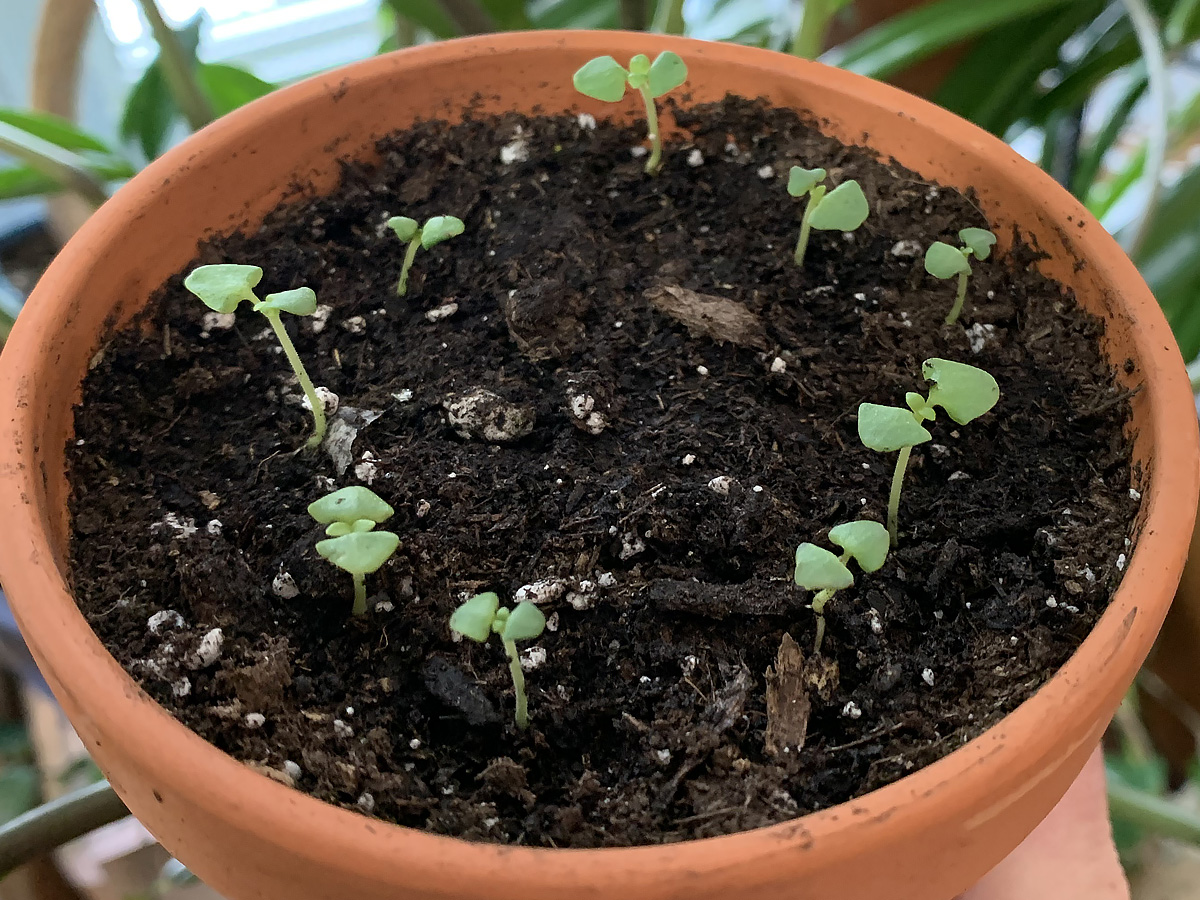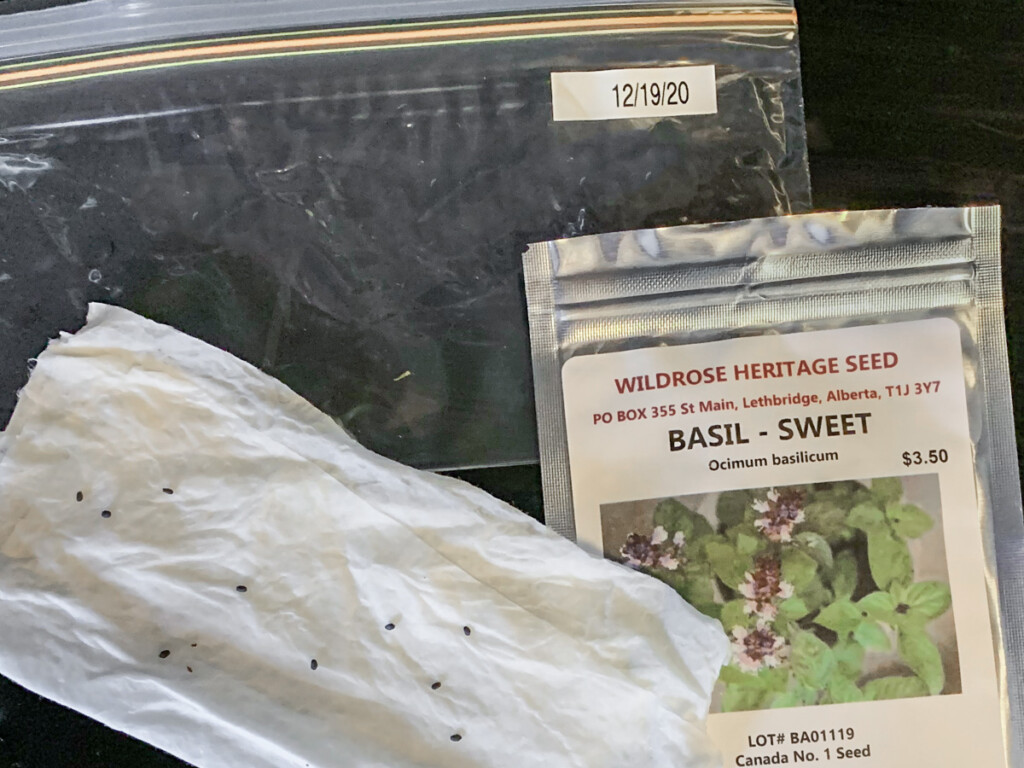Gone to seed

Photo by Calgary Horticultural Society
Finally, that gardener’s itchy green thumb can get a workout. I know, it’s mid-winter and it will be weeks before we garden outdoors. However, plants that require a long season to reach maturity need to be started soon. Are you ready?
February is the time to start fibrous begonias (wax begonias for example), black-eyed Susan vines, and impatiens from seed. While many vegetables, such as tomatoes and cabbage family plants, are started in mid-March. Starting with fresh seeds is a good start to growing success, but if you’re like me, over the years you’ve acquired a collection of seed packages, some never opened.
The beginning of February is the perfect time to evaluate the viability of these seeds. There should be enough time to determine if they’ll germinate, and if not purchase replacements.
A germination test is easy to conduct. You need a plastic bag, piece of paper towel, water, and seeds. Label the bag with the date you start the test. Fold the paper towel so it will fit into the bag. I like to use snack bags for these tests and pick-a-size paper towel, as they are a good size match. Wet the paper towel. It should be damp, not sopping wet.
Select 10 seeds from the package and place them spread out across the paper towel. Carefully, place the seeded paper towel into the bag. Keep the bag unsealed or partially sealed as there needs to be some airflow into the bag. Most seeds don’t require light to germinate, so place the seeds where you can see them to remember to check on them every few days.
I place the bag seeds down, towel up, to ensure the seed are always in contact with the moist towel. When you check the seeds for germination, also ensure that the paper towel is moist. Dribble or spray in a bit of water if it is needed.
Your seed package should note when to expect germination. Typically, seeds germinate in seven to 21 days. If only half your seed germinate at the end of 21 days, you can still use the seeds, but be sure to over-plant, placing five seeds where you might only use two. If more plants start than you need, thin them, keeping only the healthiest. If fewer than half the seeds germinate, replace the seeds with a new package.
You don’t need to discard the sprouted seeds from your germination test. Cut a square of paper towel around the seeds and plant it with the sprout. Don’t try pulling the seed off the towel as the tiny roots embedded into the towel will break off. Paper towel is wood fibre and will just become another element in the growing medium.
So, how has my germination tests gone? I can tell you that eight-year-old marigold seeds whose open package was stuffed in a drawer lost their viability. After 21 days, zero have germinated. The basil seeds that I bought last year are doing great. Nine of the 10 seeds sprouted after seven days. I’ve potted up the sprouts from the germination test.
A seed is a living thing. Most seeds are good for at least a couple of years if stored properly. Properly means that they are stored in a cool, dry location, ideally at a steady temperature, and away from sunlight. Moisture, sunlight, and temperature changes are all triggers for germination. Once a seed starts the germination process, if it doesn’t have all the conditions to grow, it will die.

If humidity levels drop too low and moisture is pulled from the seed, it will dry out and no longer be viable. So, how should you store seeds? Date your seed packages clearly. Place opened seed packages in a sealable plastic bag. Each seed package should have its own bag. Place the sealed seed package containing bag into an airtight container, such as a canning jar.
Label the jar with what it contains and storage date. Tuck the jar into a space at the back of the fridge or a cool, dark, place in the basement. Make a note in your garden journal about what seeds are in the jar and where they are stored.
Put a note on your calendar to alert you of the stored seeds when you start your garden plans for the next growing season. Only open the jar when you are ready to conduct a germination test or plant. It’s time to scratch that itchy green thumb — Come Grow with Us!
To learn more about the Calgary Horticultural Society and gardening in Calgary, visit calhort.org.
